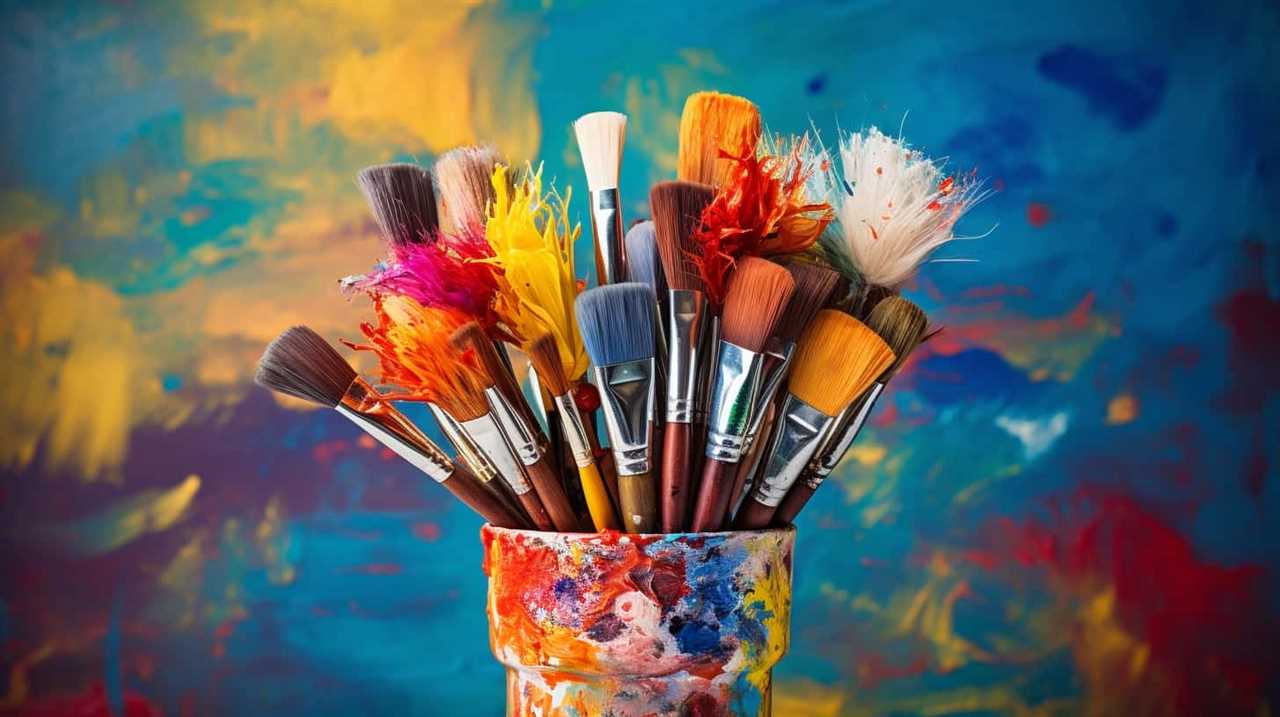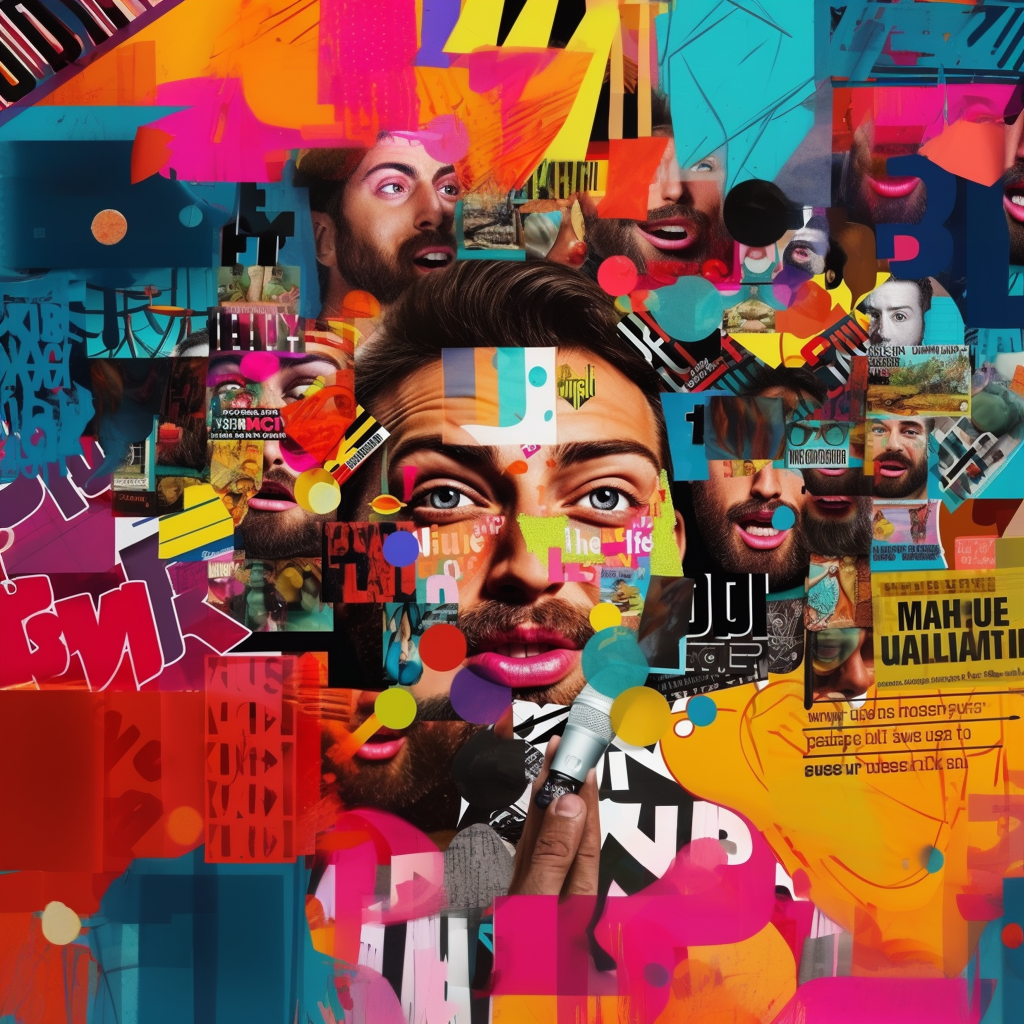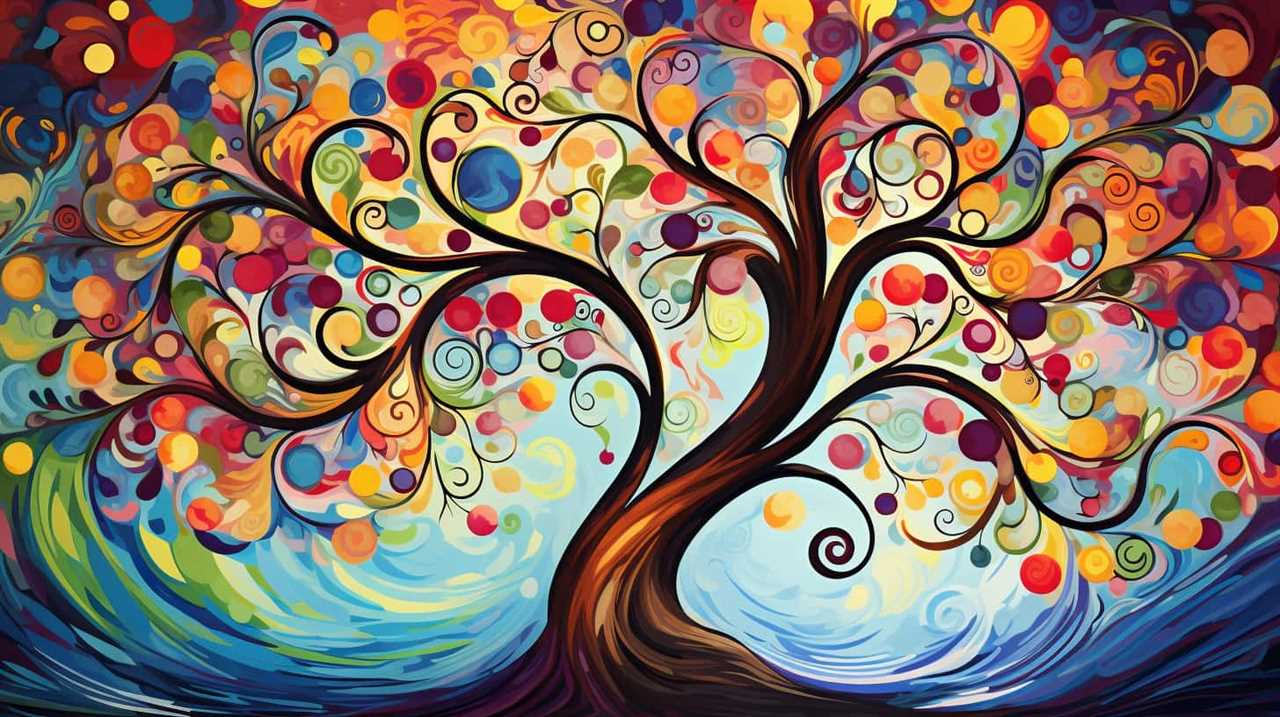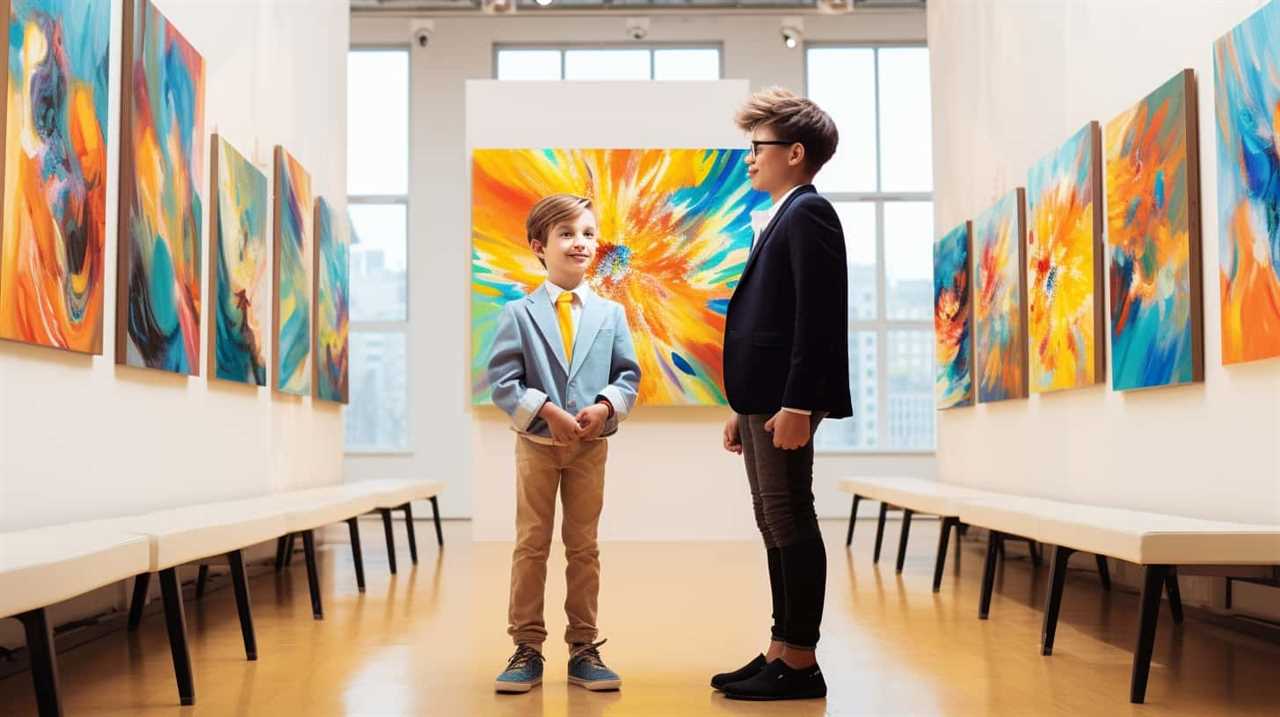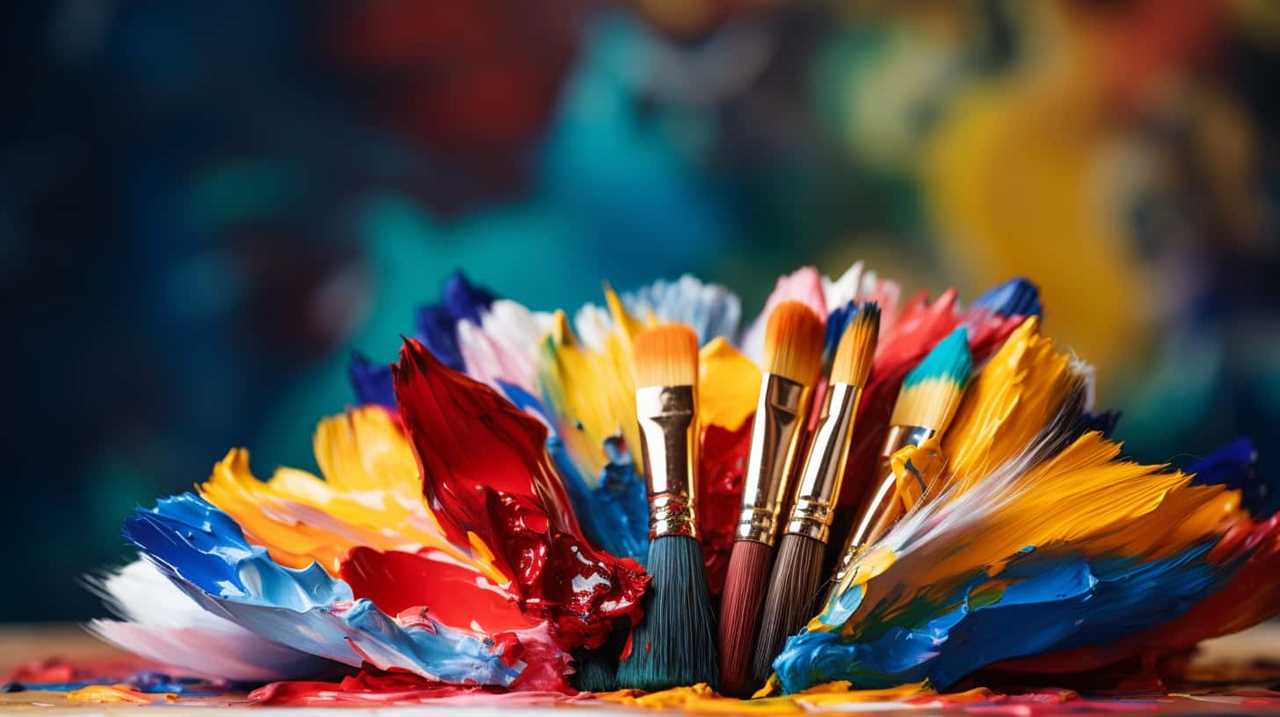Have you ever questioned the impact of art on your well-being? It’s time to think again.
Creative expression has the power to boost your overall sense of wellbeing, unleashing the innovative spirit within you. Through art, you can tap into a therapeutic outlet that allows your imagination to run wild, fostering a deep connection between your emotions and artistic expression.
This unique form of self-discovery enables you to explore new depths of your own creativity and unlock hidden talents. By engaging in artistic expression, you can experience a profound sense of mental clarity and personal growth.
Don’t underestimate the transformative potential of art; it has the capacity to enhance your happiness and improve your overall wellbeing in ways you never thought possible.

Key Takeaways
- Art therapy and creative healing offer innovative approaches to address emotional and psychological challenges.
- Engaging in artistic activities helps express and process difficult emotions.
- Artistic exploration leads to transformative insights and revelations.
- Incorporating artistic activities into life has a profound impact on overall wellbeing.
The Healing Power of Art
Discover how art can heal and transform your experience of pain and trauma. Art therapy and creative healing offer innovative approaches to address emotional and psychological challenges.
Through the power of artistic expression, individuals can find solace, gain insights, and embark on a journey of self-discovery and healing.
Art therapy is a form of therapy that utilizes various artistic mediums, such as painting, drawing, and sculpting, to help individuals explore their emotions, thoughts, and experiences in a safe and supportive environment. By engaging in the process of creating art, individuals can externalize their inner turmoil, allowing them to gain a new perspective on their pain and trauma.
Creative healing goes beyond traditional therapy methods by embracing the transformative and cathartic nature of art. Through art, individuals can tap into their subconscious, accessing deeply buried emotions and memories. This process allows for the release of pent-up feelings, providing a sense of relief and promoting emotional well-being.

Art has the power to give a voice to the voiceless, enabling individuals to express themselves when words fail. It allows for the exploration of complex emotions, providing a means to communicate and process difficult experiences. Art therapy and creative healing offer alternative avenues for healing, empowering individuals to navigate their pain and trauma in a way that’s unique to them.
Art as a Therapeutic Outlet
Tap into the power of art as a therapeutic outlet for your emotional and psychological well-being. Art has long been recognized as a powerful tool for healing and self-expression. Whether you have experienced trauma or are simply seeking a way to navigate the complexities of everyday life, art therapy can provide a safe and transformative space for exploration.
Art therapy for trauma is a specialized approach that combines the benefits of therapy with the creative process. Engaging in artistic activities such as painting, drawing, or sculpting can help you express and process difficult emotions that may be difficult to put into words. Through the act of creation, you can gain a deeper understanding of your experiences and find a sense of empowerment and healing.
The therapeutic benefits of creative expression extend beyond trauma. Art can be a powerful tool for self-discovery, stress reduction, and personal growth. It allows you to tap into your innermost thoughts and feelings, providing a means of self-expression that goes beyond traditional forms of communication. The process of creating art can be cathartic, helping you release tension and find inner peace.
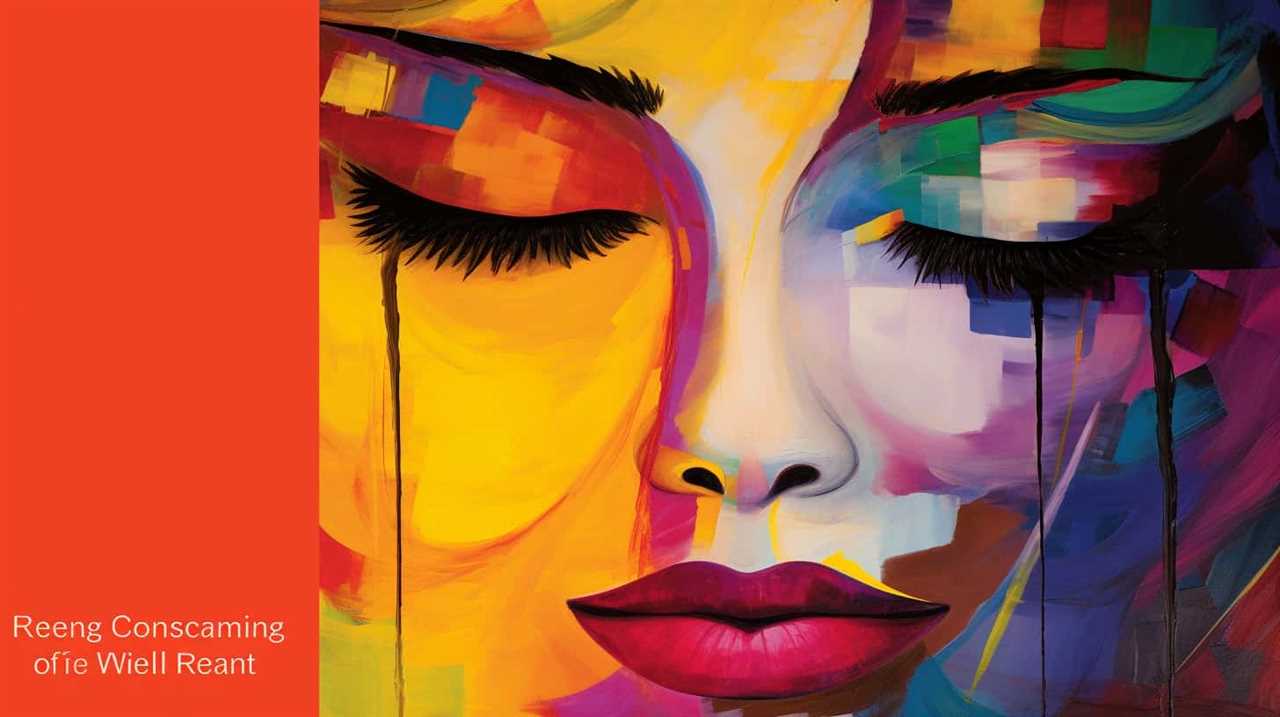
How Creativity Enhances Wellbeing
Engaging in creative expression through art can significantly enhance your overall wellbeing. The impact of artistic activities on mental health is profound, as it allows you to tap into your creativity and explore your emotions in a unique and meaningful way. By engaging in artistic endeavors, you’re able to express yourself freely, without judgment or expectations, which can be incredibly liberating.
Creativity has the power to reduce stress and anxiety, as it provides an outlet for self-expression and allows you to focus on the present moment. When you immerse yourself in artistic activities, you enter a state of flow, where time seems to stand still and your mind becomes fully engaged in the creative process. This can be incredibly therapeutic and can help alleviate symptoms of depression and other mental health issues.
Moreover, engaging in creative expression promotes self-discovery and personal growth. Through art, you’re able to explore your thoughts, feelings, and experiences, gaining a deeper understanding of yourself and your place in the world. This self-reflection can lead to increased self-confidence, improved self-esteem, and a greater sense of purpose and fulfillment.
Incorporating artistic activities into your life can have a profound impact on your overall wellbeing. Whether you choose to paint, draw, write, or engage in any other creative outlet, the benefits of creativity on mental health are undeniable. So, why not embrace your creativity and unlock the transformative power of art? Your wellbeing will thank you.
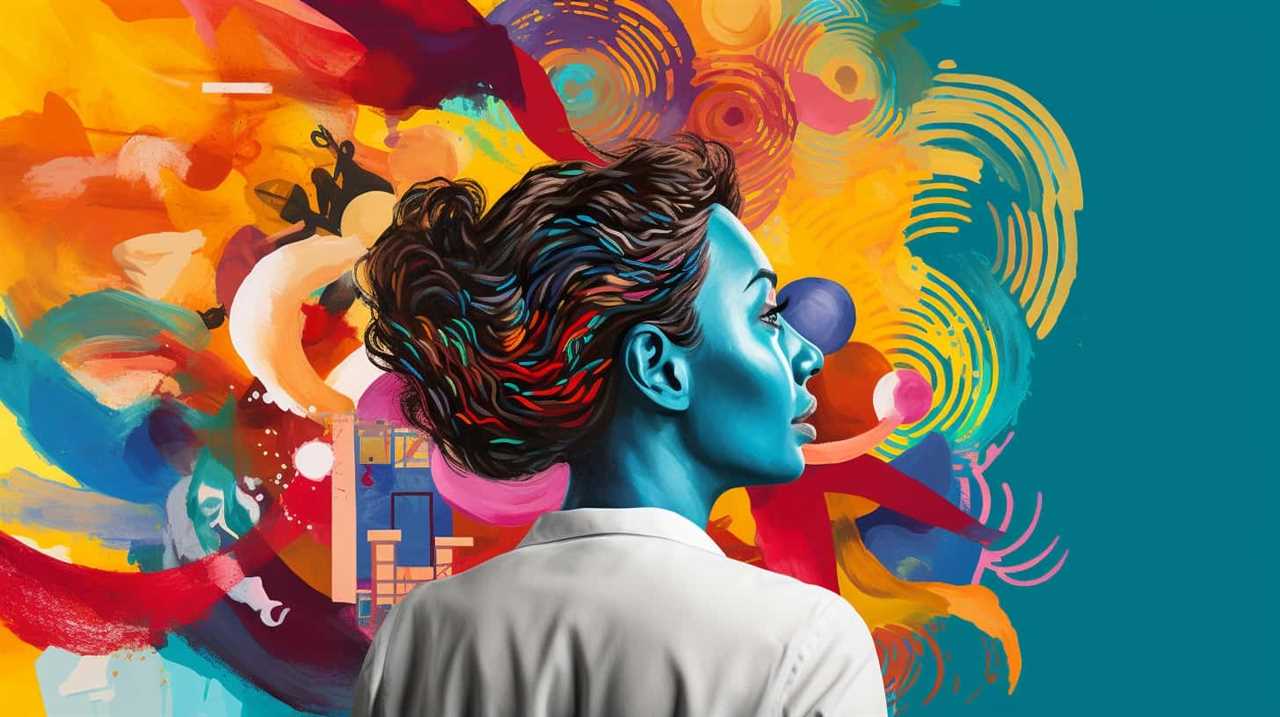
Artistic Expression and Emotional Health
By embracing artistic expression, you can actively nurture your emotional health and well-being. Art has a profound impact on your mood, allowing you to explore and express a wide range of emotions. Through various art therapy techniques, you can delve into your inner world and discover new ways to process and cope with your emotions.
Engaging in art can serve as a form of emotional release, providing you with a safe space to express and communicate feelings that may be difficult to put into words. Whether it’s painting, drawing, sculpture, or any other artistic medium, it allows you to channel your emotions and create something tangible and meaningful.
Artistic expression also has the power to positively influence your mood. When you engage in the creative process, you stimulate the release of endorphins, which are natural mood-enhancing chemicals in the brain. This can lead to feelings of joy, relaxation, and a sense of accomplishment.
Moreover, art provides an avenue for self-reflection and introspection, allowing you to gain insights into your own emotions and experiences. It can help you gain a deeper understanding of yourself, your thoughts, and your feelings.
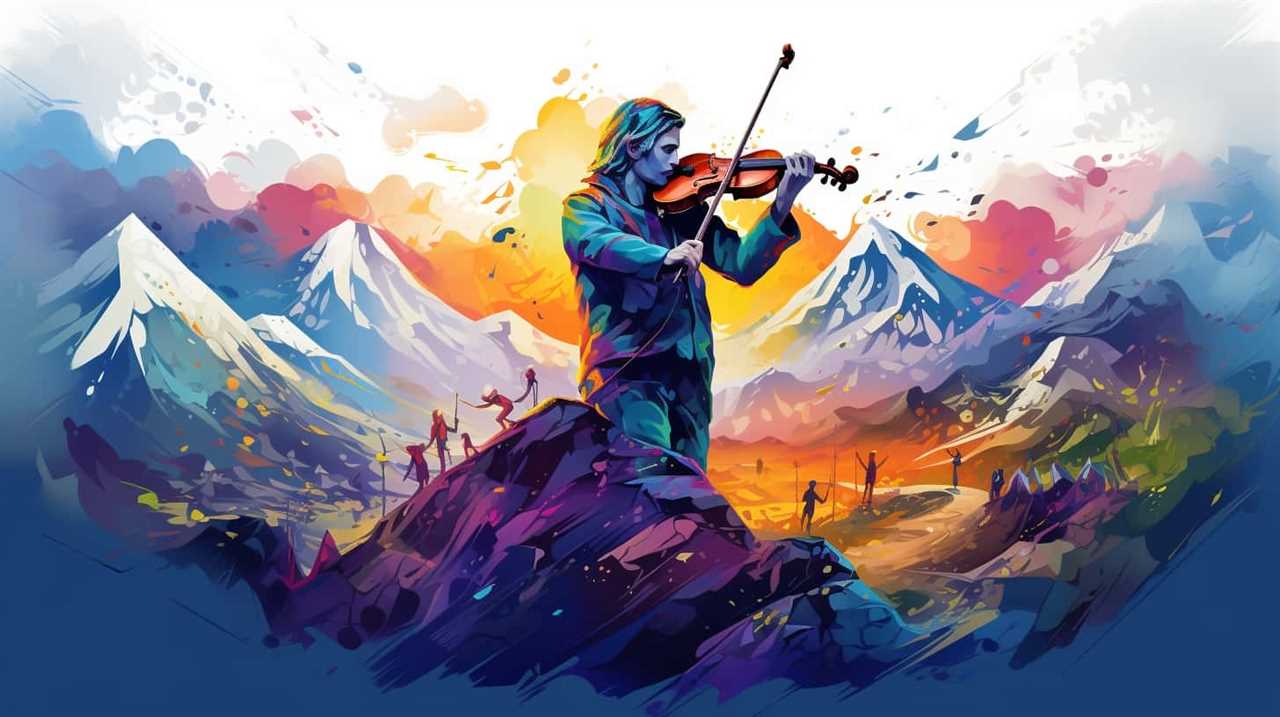
The Role of Art in Self-Discovery
Art has a profound way of helping you uncover aspects of yourself that may have been hidden or overlooked.
Through the process of artistic exploration, you can tap into your emotions, thoughts, and experiences, gaining a deeper understanding of who you are.
Art and Self-Awareness
Through the process of creating art, you can gain a deeper understanding of yourself and your emotions. Art has long been used as a tool for self-discovery, allowing individuals to explore their inner world and express their thoughts and feelings in a visual form. Art therapy, in particular, has been recognized for its role in emotional healing, providing a safe and nonverbal outlet for processing and releasing difficult emotions.
Here are five ways in which art can enhance self-awareness:

- Art encourages self-reflection and introspection.
- Art allows for the exploration of subconscious thoughts and emotions.
- Art provides a means of expressing and communicating complex feelings.
- Art can uncover hidden strengths, vulnerabilities, and desires.
- Art promotes mindfulness and present-moment awareness.
By engaging in artistic expression, you can gain invaluable insights into yourself, leading to a greater sense of self-awareness and personal growth.
As we delve deeper into the concept of healing through artistic exploration, we’ll explore how art can be a transformative force in promoting overall wellbeing.
Healing Through Artistic Exploration
Embark on a transformative journey of self-discovery through the healing power of artistic exploration.
Artistic healing offers a unique avenue for creative exploration, allowing you to delve into the depths of your inner world and uncover hidden aspects of yourself.
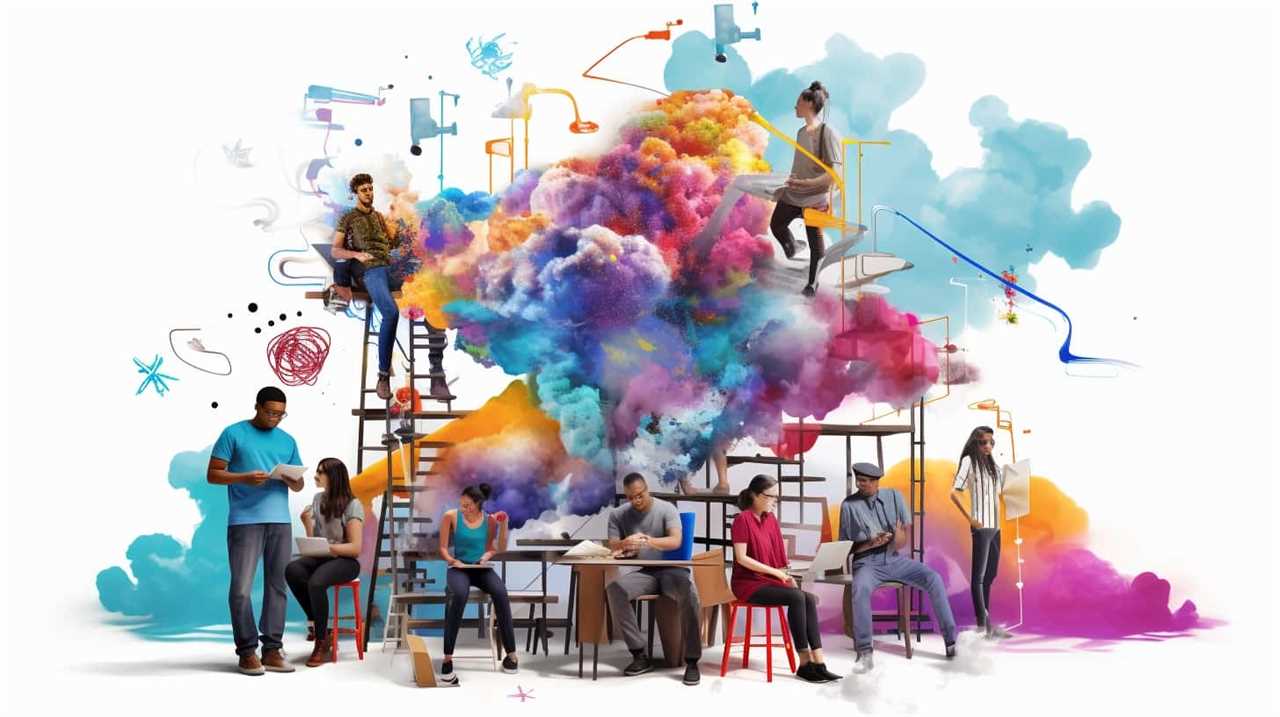
Through the process of creating art, you can tap into your emotions, thoughts, and experiences, giving them form and substance. As you engage in this creative process, you may find yourself surprised by the insights and revelations that arise.
Art becomes a mirror through which you can reflect on your own identity, desires, and fears. It provides a safe space to express, explore, and make sense of your innermost thoughts and feelings.
Allow the brush, the pen, or the instrument to guide you on this journey of self-discovery, and witness the transformative power of artistic exploration.
Artistic Practices for Mental Wellness
One key practice for improving mental wellness is engaging in a variety of artistic activities. Art has long been recognized as a powerful tool for emotional healing and self-expression, and incorporating artistic practices into your daily routine can have a profound impact on your mental wellbeing. Here are five art therapy techniques that can help you on your journey towards better mental health:
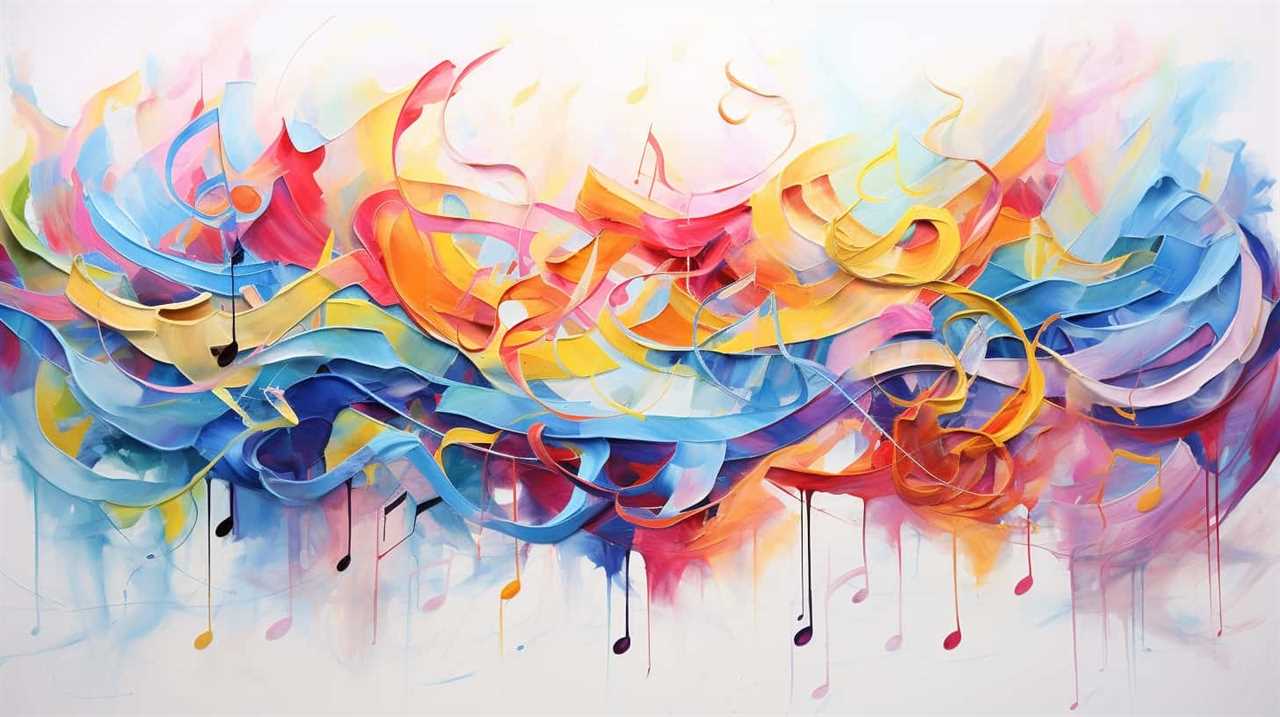
- Painting: Allow yourself to get lost in the world of colors and brushstrokes, expressing your emotions and thoughts through the canvas.
- Collage-making: Cut and paste images, words, and textures to create a visual representation of your inner world, exploring themes that resonate with you.
- Journaling: Use words and imagery to document your thoughts, feelings, and experiences, providing a creative outlet for self-reflection and introspection.
- Sculpting: Mold clay or other materials into shapes and forms that symbolize your emotions, allowing you to physically express and release pent-up feelings.
- Photography: Capture moments that hold meaning for you, using the lens to explore your unique perspective and find beauty in the world around you.
By engaging in these artistic practices, you can tap into your creativity and connect with your emotions, providing a therapeutic outlet for self-expression and self-discovery.
These practices can lay the foundation for the subsequent section about art therapy and its benefits, where we’ll delve deeper into the transformative power of art in promoting mental wellbeing.
Art Therapy and Its Benefits
Explore how art therapy can enhance your mental wellbeing and bring about positive transformations in your life. Art therapy techniques offer a unique and innovative approach to healing and self-discovery. Through the use of various artistic mediums, such as painting, drawing, and sculpting, art therapy allows you to express yourself creatively and tap into your inner emotions and thoughts.
Art therapy recognizes that art isn’t merely a form of visual expression but also a powerful means of communication. It provides a safe and non-verbal outlet for self-expression, allowing you to convey your feelings, experiences, and struggles in a way that words alone can’t capture. By engaging in the creative process, you can gain insights into your own psyche, uncover hidden emotions, and explore new perspectives.

Furthermore, art therapy has been shown to promote relaxation, reduce stress and anxiety, and improve overall mental health. Engaging in art-making can serve as a form of meditation, helping you to focus your mind, let go of worries, and find a sense of calm and inner peace. By tapping into your creativity, you can access a state of flow, where time seems to stand still and you’re fully absorbed in the present moment.
In the following section, we’ll explore how art can be used as a form of meditation, further deepening the connection between creativity and mental wellbeing. So, let’s dive in and discover the transformative power of art as a tool for self-discovery and personal growth.
Exploring Art as a Form of Meditation
Discover how incorporating art into your meditation practice can enhance your overall sense of wellbeing. Artistic mindfulness allows you to engage in the present moment, focusing on the creative process and the sensations it evokes. By using art for relaxation, you can tap into a deeper connection with yourself and experience a multitude of benefits.
Here are five reasons why exploring art as a form of meditation can be transformative:
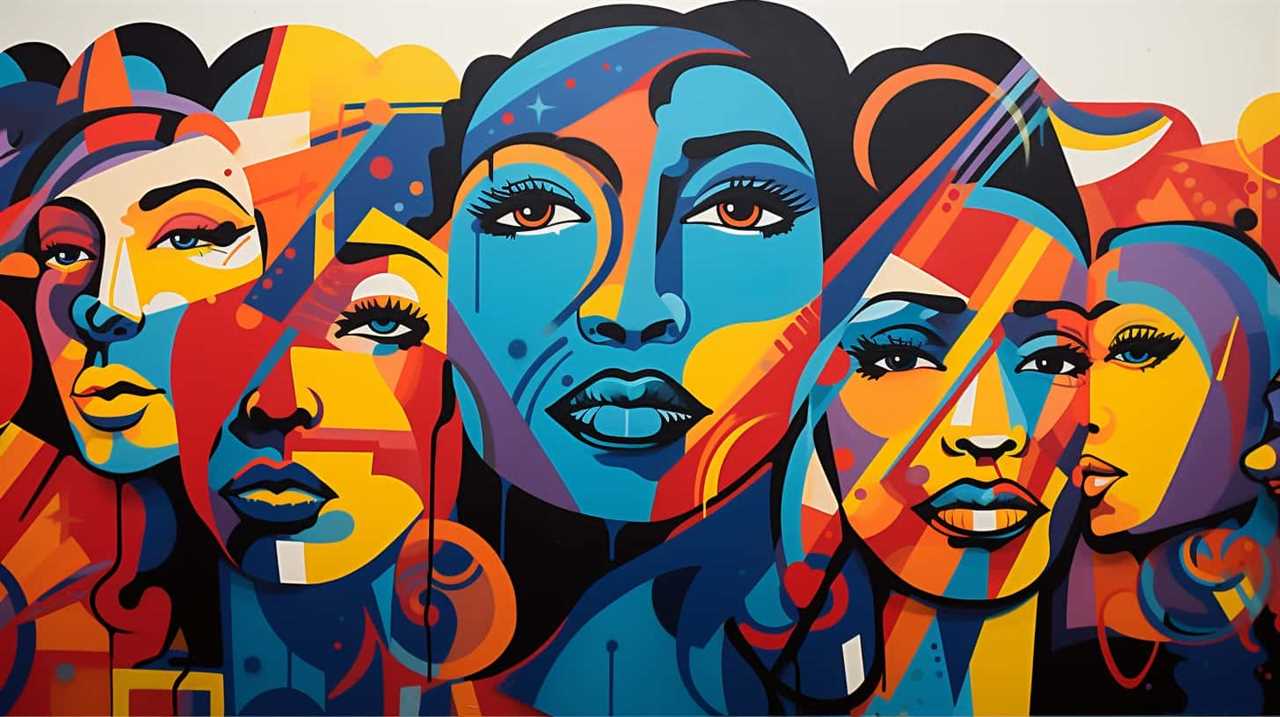
- Enhances self-awareness: Artistic mindfulness encourages you to explore your thoughts, emotions, and sensations, leading to a greater understanding of yourself.
- Promotes stress reduction: Engaging in art can help you relax, reduce anxiety, and alleviate stress, providing a calming effect on your mind and body.
- Cultivates mindfulness: Through art, you can develop a heightened sense of awareness, focusing on the present moment and fostering a state of mindfulness.
- Stimulates creativity: Artistic meditation stimulates your imagination, allowing you to tap into your creative potential and think outside the box.
- Boosts self-expression: Art provides a medium for self-expression, enabling you to communicate your thoughts and emotions in a non-verbal way.
By incorporating art into your meditation practice, you can unlock a world of creativity and self-discovery.
As you continue your journey, let’s explore how art can be used in stress reduction techniques.
Art and Stress Reduction Techniques
Are you looking for effective ways to reduce stress and find inner peace? Art can be a powerful form of therapy, allowing you to express your emotions and release tension.
Through the act of creating, you can also practice mindfulness, immersing yourself in the present moment and finding solace in the process.
![]()
Moreover, visual relaxation techniques, such as drawing or coloring, can help calm your mind and bring a sense of serenity to your hectic life.
Art as Therapy
To effectively manage stress and promote emotional well-being, incorporate art into your therapeutic routine using techniques such as mindfulness coloring and expressive painting.
Art therapy techniques have been proven to provide numerous benefits, including stress reduction, improved mood, increased self-awareness, and enhanced problem-solving skills.
By engaging in mindful coloring, you can focus your attention on the present moment, allowing your mind to relax and release tension.
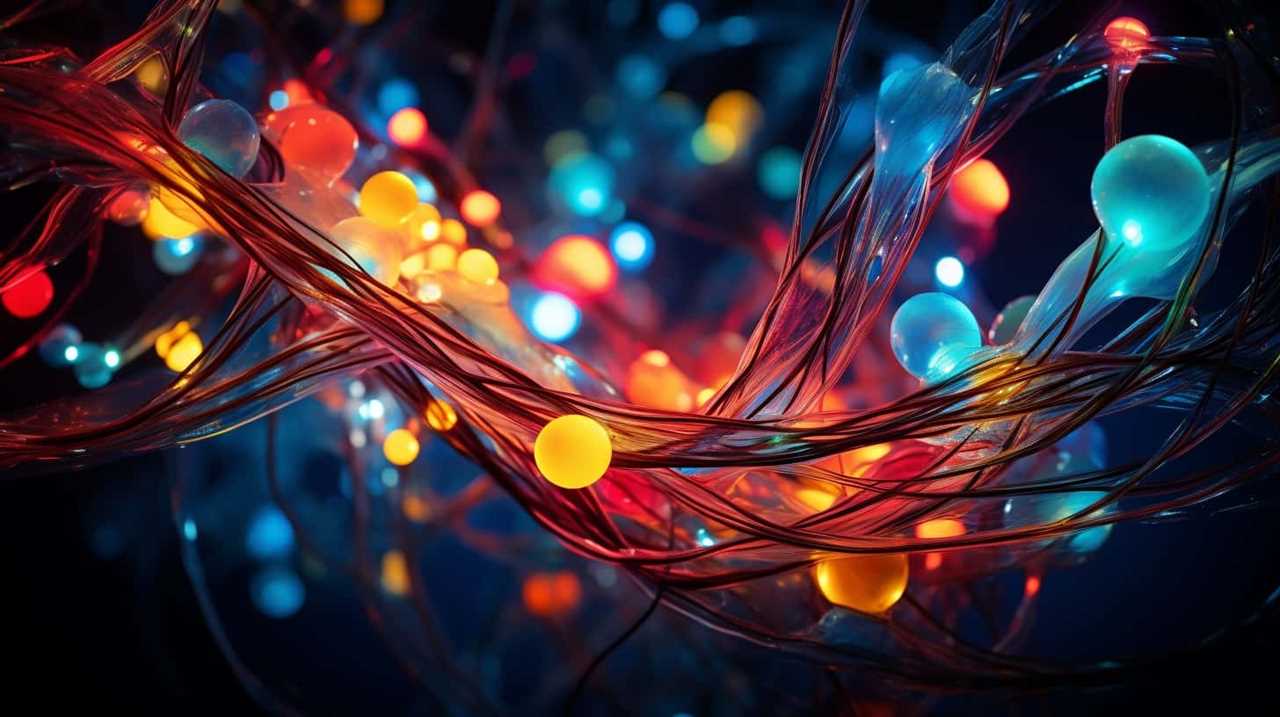
Expressive painting provides an outlet for self-expression and emotional release, allowing you to explore your feelings and thoughts in a non-verbal way.
Additionally, art therapy can help you gain a better understanding of yourself and your emotions, leading to increased self-esteem and a sense of empowerment.
By incorporating art into your therapeutic routine, you can tap into your creative potential and find new ways to cope with stress and enhance your overall well-being.
Transition: Now that you’ve explored the benefits of art therapy, let’s delve into the topic of mindfulness through creation.
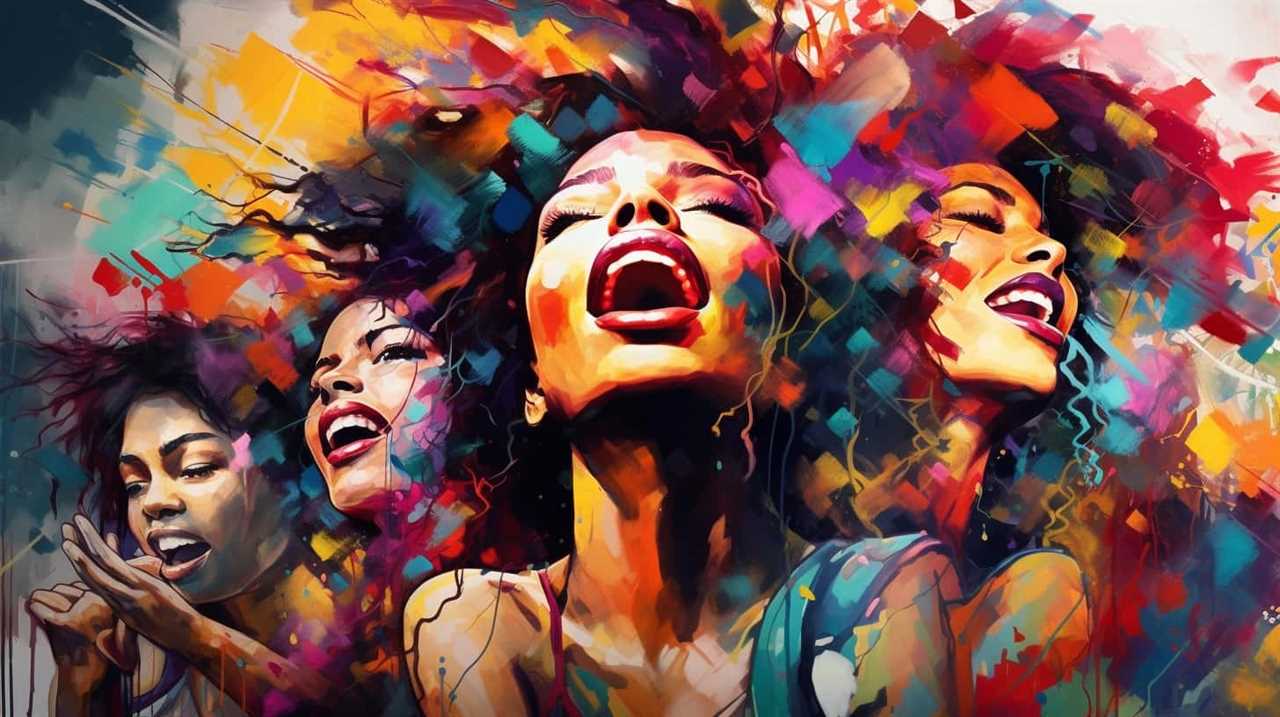
Mindfulness Through Creation
Engage in mindful creation for stress reduction and improved well-being through art techniques. Mindful creativity allows you to focus your attention on the present moment, promoting relaxation and self-awareness. By engaging in therapeutic art activities, you can tap into your inner creativity and find solace in the process of creation. Whether it’s painting, drawing, or sculpting, these activities provide a safe space for self-expression and release of pent-up emotions. As you immerse yourself in the act of creation, you become more attuned to your thoughts, feelings, and sensations, allowing you to better understand and manage stress. Embrace the transformative power of art as you practice mindfulness and unlock the potential for personal growth and well-being.
| Mindful Creativity | Therapeutic Art Activities |
|---|---|
| Painting | Drawing |
| Sculpting | Collage-making |
| Pottery | Photography |
| Writing | Coloring |
Now that you have explored the benefits of mindful creation, let’s delve into visual relaxation techniques and discover how they can further enhance your well-being.
Visual Relaxation Techniques
Continue your journey to enhance your well-being by exploring visual relaxation techniques—art and stress reduction techniques that can help you find peace and tranquility.
Visual meditation is a powerful tool that allows you to focus your attention and calm your mind through the creation of art.

Here are some artistic relaxation techniques that you can try:
- Mandalas: Create intricate patterns and designs within a circular shape, allowing your mind to relax and find balance.
- Nature-inspired art: Use colors and textures to recreate the beauty of nature, immersing yourself in its calming presence.
- Collage: Cut out images and words from magazines or old books and arrange them in a way that reflects your emotions and aspirations.
- Zentangle: Draw repetitive patterns and shapes, allowing your mind to enter a state of mindfulness and relaxation.
- Watercolor wash: Experiment with blending different colors and creating gentle, flowing strokes, letting go of control and embracing the fluidity of the medium.
Unlock your creative potential and find solace in the process of creating art. Let your imagination soar and discover the therapeutic power of visual relaxation techniques.
Artistic Expression and Resilience
Artistic expression can enhance your resilience and overall wellbeing. When faced with challenges and adversity, expressing yourself through art can be a powerful coping mechanism. It allows you to channel your emotions, thoughts, and experiences into a tangible form, giving you a sense of control and empowerment.
Artistic expression allows you to explore your inner world, providing an outlet for self-reflection and introspection. Through art, you can gain insights into your own thoughts and emotions, helping you to better understand yourself and navigate through difficult times.

Art can also serve as a means of communication, connecting you with others who may be going through similar experiences. It creates a sense of belonging and community, fostering support and understanding. The act of creating art can help you build resilience by developing problem-solving skills, adaptability, and the ability to find beauty in even the most challenging circumstances.
| Artistic Expression and Resilience | ||
|---|---|---|
| Enhances resilience | Provides a sense of control | Fosters self-reflection |
| Promotes problem-solving skills | Builds a sense of community | Encourages adaptability |
The Connection Between Art and Happiness
When it comes to your happiness, art has the power to make a profound impact.
Art therapy benefits not only your mental health but also your overall well-being, providing a creative outlet for expression and healing.
Art Therapy Benefits
One of the key benefits of art therapy is that it can significantly enhance your sense of happiness and well-being. Engaging in art therapy techniques and creative healing methods can have a profound impact on your emotional and mental state.
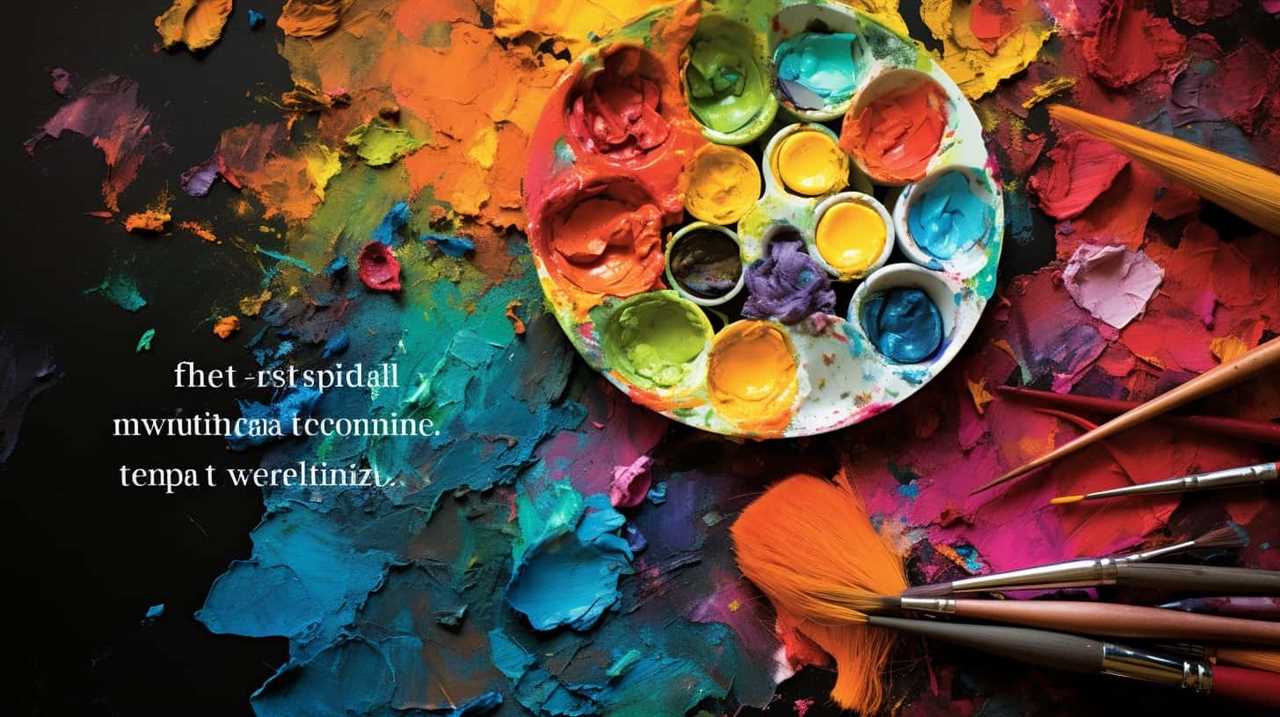
Here are five ways art therapy can benefit you:
- Increases self-awareness: Art therapy provides a safe space for self-expression, allowing you to explore your thoughts and emotions in a non-judgmental environment.
- Reduces stress and anxiety: The act of creating art can help relax your mind, release tension, and promote a sense of calm and tranquility.
- Enhances self-esteem: Art therapy encourages you to embrace your unique artistic abilities and gain confidence in your creative expression.
- Promotes emotional healing: Art has the power to tap into your deepest emotions, allowing you to process and heal from past traumas or difficult experiences.
- Fosters personal growth: Through art therapy, you can discover new insights, gain a fresh perspective, and cultivate personal growth by exploring different artistic mediums and techniques.
Mental Health Benefits
How can art contribute to your happiness and mental health?
Art has the power to uplift your spirits, provide a sense of purpose, and foster a deep connection with yourself and others. Through artistic expression, you can explore and process your emotions, leading to improved mental well-being.
Additionally, engaging in art therapy for children can be particularly beneficial, as it allows them to communicate their thoughts and feelings in a non-verbal way.
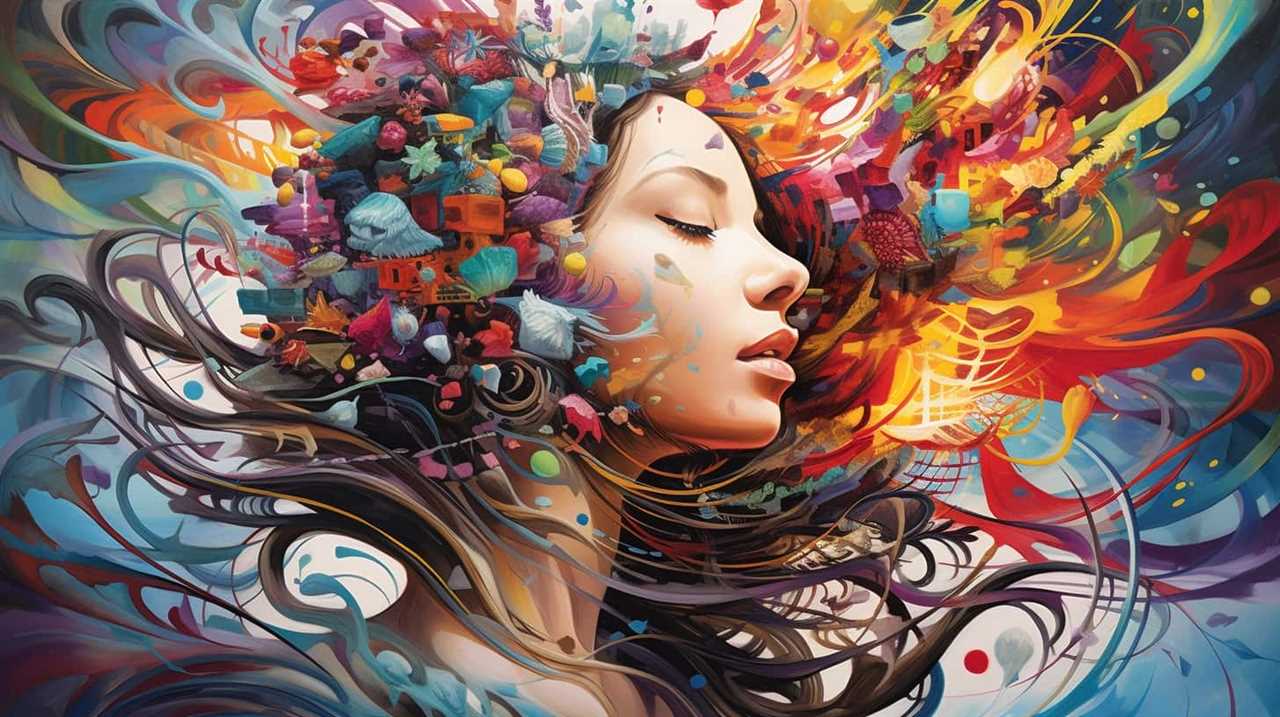
Art also has the remarkable ability to bring people together, fostering social connection and a sense of belonging. When you engage in art activities with others, you create a space for collaboration, empathy, and understanding. Sharing your art with others can lead to meaningful conversations and forge meaningful connections.
As we delve further into the topic of art as self-expression, we’ll explore how art can be a powerful tool for personal growth and communication.
Art as Self-Expression
Expressing yourself through art can greatly enhance your happiness and overall well-being. Art has a unique ability to tap into your emotions, thoughts, and experiences, allowing you to communicate and connect with yourself on a deeper level. Through art, you can explore your inner world, express your true self, and find solace and joy in the process.
Here are five art therapy techniques and therapeutic art activities that can help you unlock your creativity and boost your happiness:
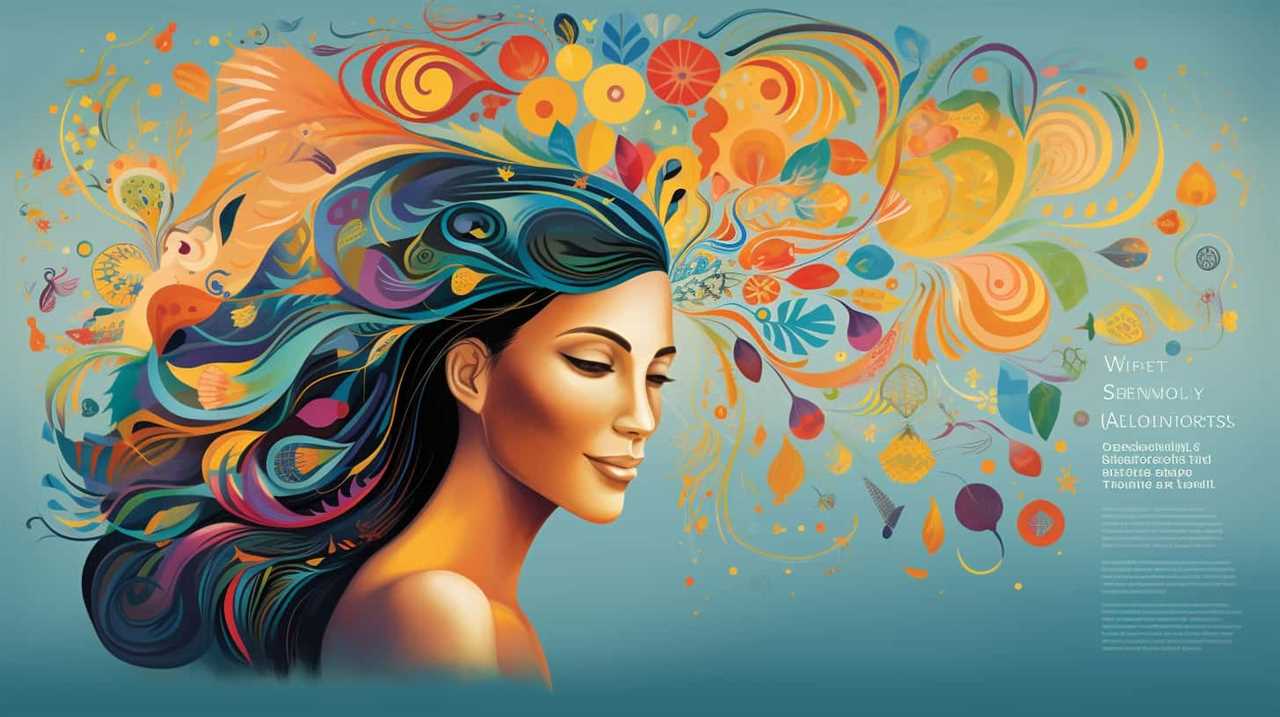
- Visual journaling: Use images, colors, and words to express your thoughts and feelings.
- Collage therapy: Create collages using magazines, newspapers, and photographs to explore your emotions and create meaning.
- Mandala drawing: Design intricate and symmetrical patterns to promote relaxation and self-reflection.
- Sculpting: Use clay or other materials to create three-dimensional representations of your emotions or experiences.
- Painting emotions: Use colors, shapes, and brushstrokes to express your emotions and release any pent-up feelings.
Art as a Tool for Personal Growth
To enhance personal growth, you can use art as a powerful tool. Art has the ability to tap into your innermost thoughts and emotions, allowing you to explore and understand yourself on a deeper level. Through various art therapy techniques, such as painting, drawing, or sculpting, you can express your thoughts and feelings in a visual form that goes beyond words. Art becomes a form of communication that transcends language barriers and allows you to communicate with yourself and others in a unique and meaningful way.
Engaging in art as a tool for personal growth can bring about a sense of self-discovery and self-awareness. It provides a safe and non-judgmental space where you can freely express yourself and explore your inner world. Through the process of creating art, you may uncover hidden emotions, gain insights into your own thoughts and beliefs, and even find solutions to personal challenges.
Art also allows for personal growth by encouraging experimentation and pushing boundaries. The act of creating art requires you to step outside of your comfort zone and try new things. This willingness to take risks and explore different possibilities can translate into other areas of your life, fostering personal growth and innovation.
Incorporating art into your personal growth journey can lead to transformative experiences. By embracing the power of art as a tool for self-expression and communication, you open yourself up to new perspectives, insights, and personal growth opportunities.
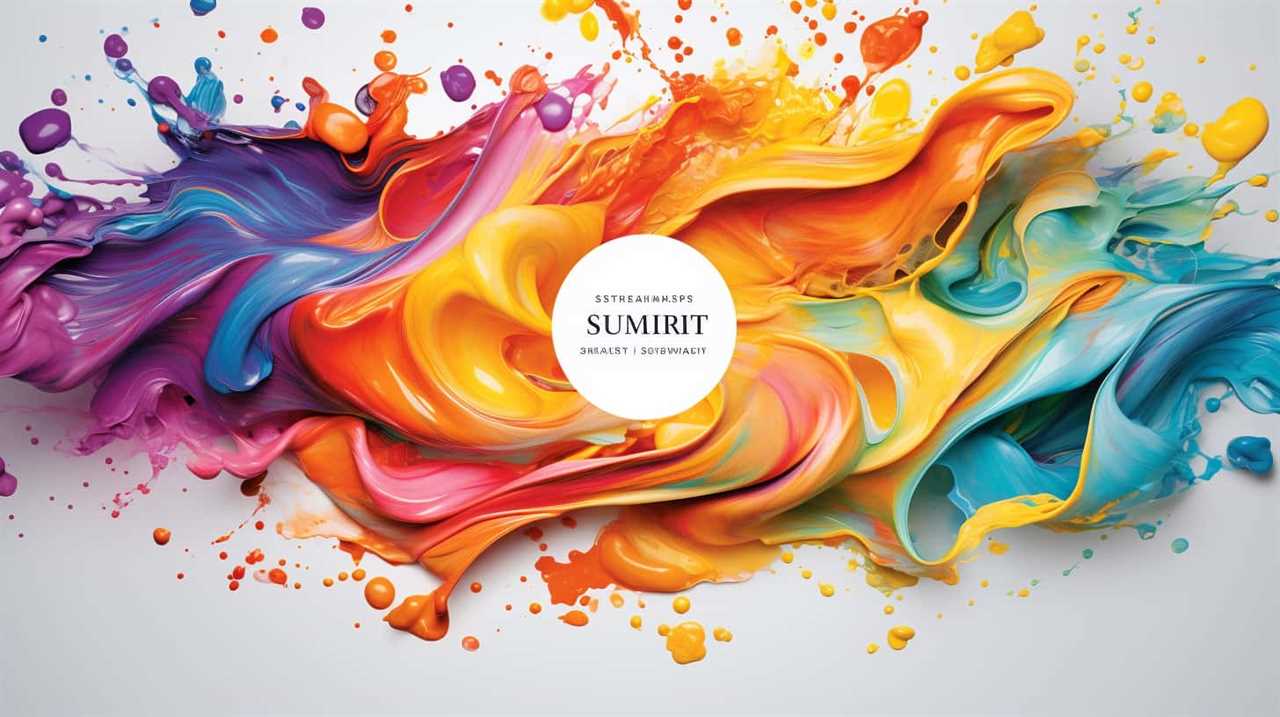
Artistic Expression and Mental Clarity
Engaging in art as a tool for personal growth can significantly enhance your mental clarity. Artistic expression has been shown to have a profound impact on cognitive function, allowing you to sharpen your focus and improve your ability to think creatively. When you immerse yourself in the process of creating art, your mind becomes fully engaged, helping to clear away mental clutter and bring clarity to your thoughts.
Here are five ways artistic expression can boost your mental clarity:
- Artistic expression promotes mindfulness, allowing you to be fully present in the moment and clear your mind of distractions.
- Engaging in art therapy can help you release emotions and express yourself in a safe and non-judgmental environment, leading to increased self-awareness and improved mental clarity.
- The process of creating art stimulates the brain, activating neural pathways and enhancing cognitive function.
- Artistic expression encourages problem-solving skills, as it requires you to think outside the box and find innovative solutions.
- Engaging in art can boost self-esteem, giving you a sense of accomplishment and confidence, which in turn can improve your mental clarity.
The Transformative Potential of Art
Immerse yourself in the transformative potential of art and experience its profound impact on your mental clarity. Artistic exploration has the power to awaken new perspectives, ignite creativity, and enhance personal growth. Through art, you can delve into the depths of your emotions, challenge societal norms, and push the boundaries of what is possible.
Consider the transformative potential of art in the following table:
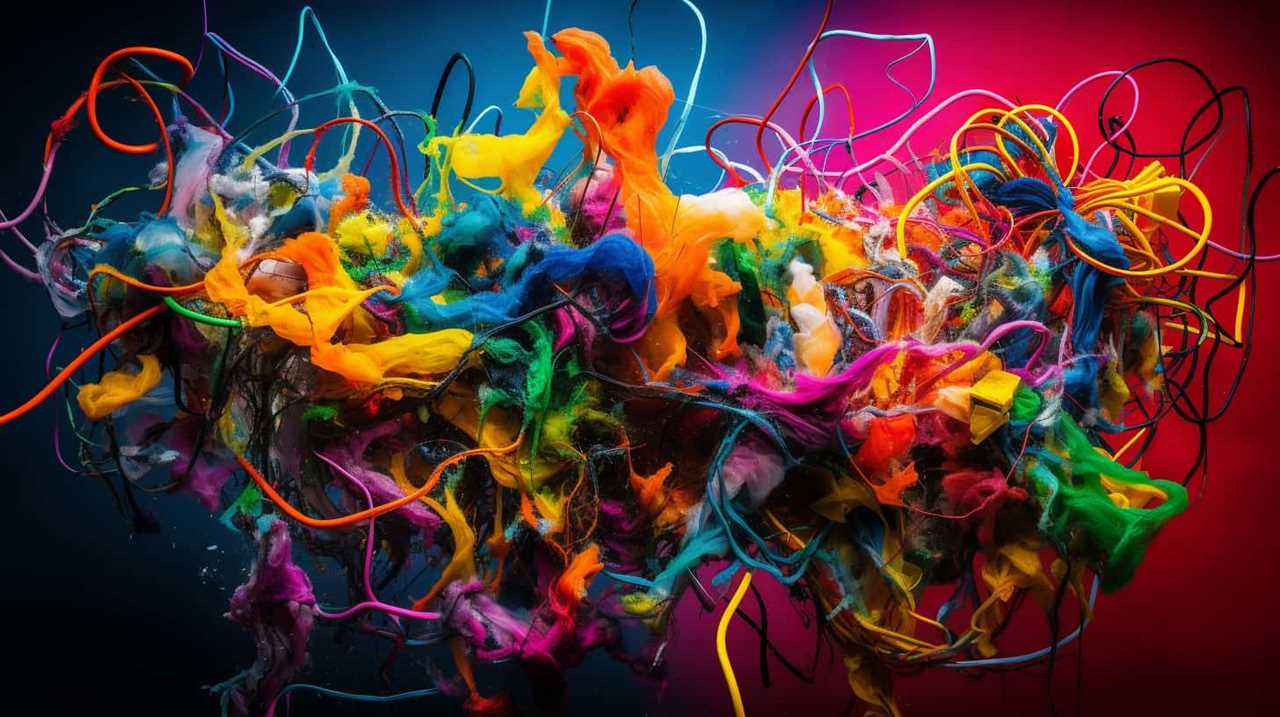
| Transformative Potential of Art | |
|---|---|
| Awakening Creativity | Artistic exploration provides a platform for you to tap into your innate creativity. It encourages you to think outside the box, explore new ideas, and challenge conventional thinking. |
| Emotional Healing | Art has the ability to heal emotional wounds by providing an outlet for self-expression. Through the process of creating art, you can release pent-up emotions, gain clarity, and find solace. |
| Personal Growth | Engaging in art allows for introspection and self-reflection, leading to personal growth. It opens doors to self-discovery, self-acceptance, and self-transformation. |
Frequently Asked Questions
How Can Art Therapy Be Used as a Tool for Personal Growth?
Art therapy benefits your personal growth by providing a safe space to explore your creativity. Through self-expression and reflection, it allows you to tap into your emotions, gain insights, and discover new perspectives, ultimately enhancing your overall wellbeing.
Can Artistic Expression Help in Reducing Stress and Anxiety?
Artistic expression can be your sanctuary, a canvas where stress and anxiety dissipate. Through art therapy, your emotions find release, and you find solace in colors and strokes. Let art guide you towards tranquility.
What Are Some Artistic Practices That Can Promote Mental Wellness?
Engaging in artistic practices for mindfulness, such as painting or journaling, can promote mental wellness by allowing you to express yourself creatively and find a sense of calm and self-reflection. Art is a powerful form of self expression that can boost your overall wellbeing.
How Does Art Contribute to Self-Discovery and Emotional Health?
Art contributes to self-discovery and emotional health by providing a creative outlet for self-expression and reflection. Through the process of creating art, you can explore your emotions, gain insight into yourself, and find healing and therapeutic benefits.

Can Art Be Used as a Form of Meditation to Enhance Mental Clarity?
Art can indeed be used as a form of meditation to enhance mental clarity. By immersing yourself in the creative process, you can find a sense of peace and focus, allowing your mind to clear and your thoughts to flow freely.
Conclusion
So, as you can see, art isn’t just a form of creative expression, but also a powerful tool for boosting wellbeing. Through art, you can find healing, discover yourself, and enhance your emotional health.
It has the ability to bring happiness, promote personal growth, and provide mental clarity. Embrace the transformative potential of art and let it guide you on a journey of self-discovery and self-improvement.
Remember, art isn’t just something you do, it’s a way of life.
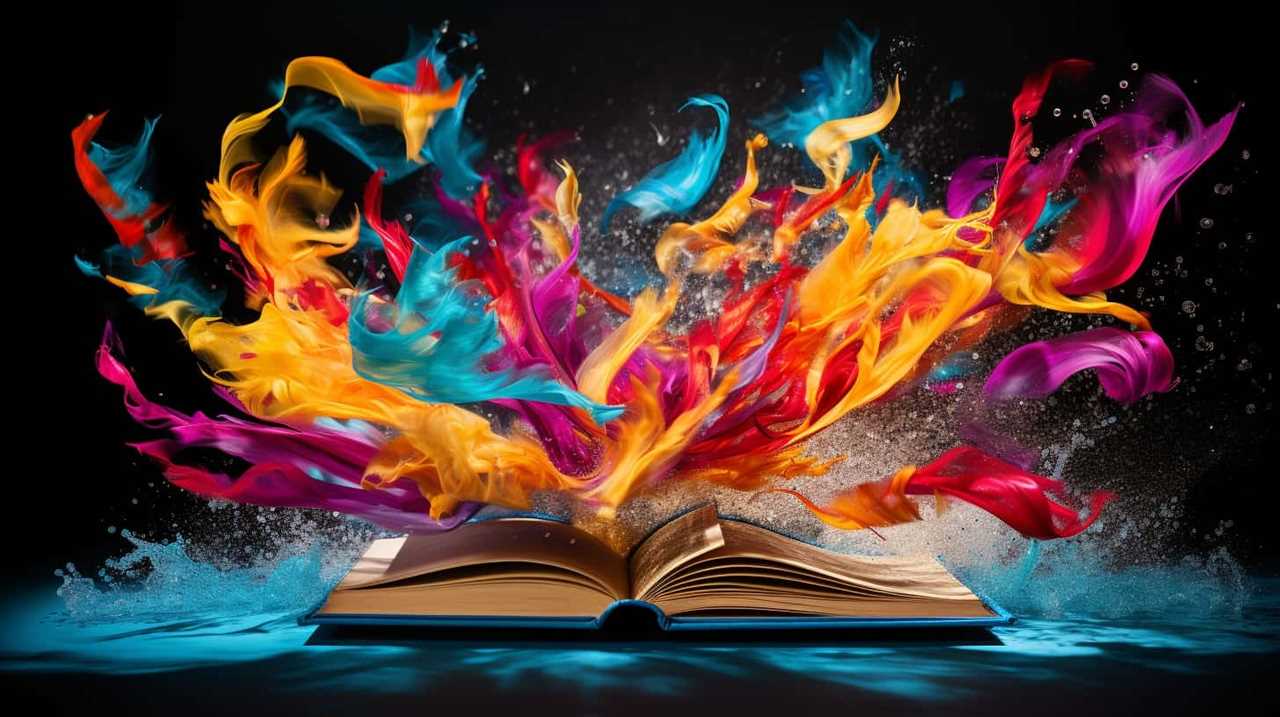
Fritz is a writer whose humor and wit infuse life into words. His creativity, combined with a profound love for the English language, makes him a unique voice at afterQuotes. Fritz’s engagement with books, culture, and social media adds depth to his contributions, making them resonate with our diverse audience.

